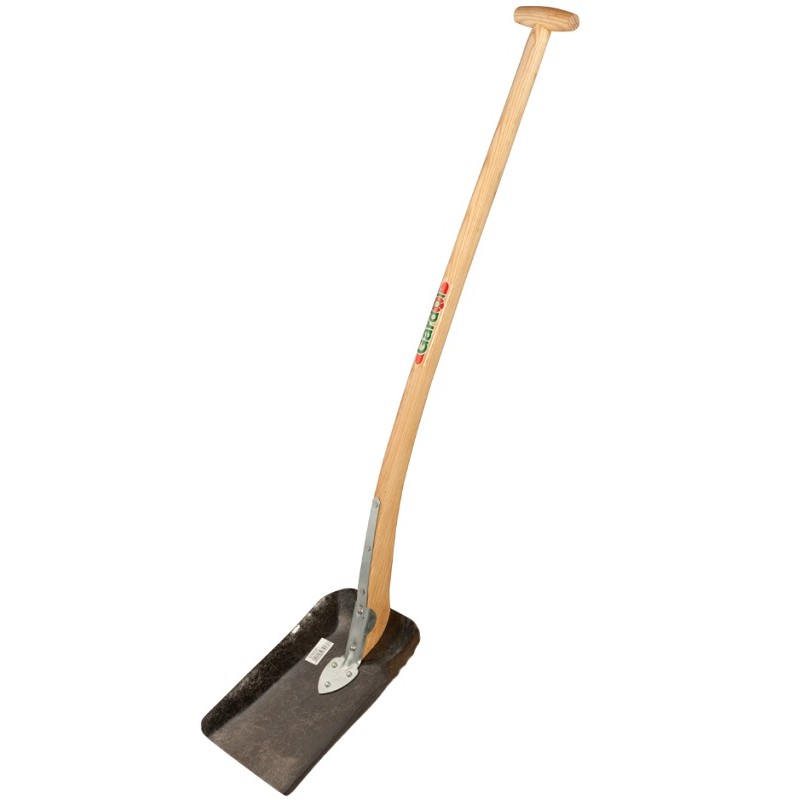|
Gerald Clarke (artist)
Gerald Clarke (born February 24, 1967) is a sculptor, installation, and conceptual artist from the Cahuilla Band of Mission Indians. His work often reflects on and questions current issues in Native America and the United States, as well as his personal life. Background Early life Gerald Clarke was born in Hemet, California on February 24, 1967, to parents Carol and Gerald Clarke Sr., his father being born Cahuilla. At the age of 3 his parents divorced and he moved with his siblings and mother to Orange County, and on the weekends he would return to the reservation to spend time with his father. At age 16, he moved to Arkansas with his mother and sister. He attended Ozarka College, where he majored in welding, electrical maintenance, and hydraulics; three necessary components to the artworks Clarke would create as a full-time artist. Higher education After graduation from vocational school, Clarke worked as a welder, and eventually met Stacy Brown, whom he would eventually m ... [...More Info...] [...Related Items...] OR: [Wikipedia] [Google] [Baidu] |
Hemet, California
Hemet is a city in the San Jacinto Valley in Riverside County, California. It covers a total area of , about half of the valley, which it shares with the neighboring city of San Jacinto. The population was 89,833 at the 2020 census. The founding of Hemet, initially called South San Jacinto, predates the formation of Riverside County. This area was then still part of San Diego County. The formation of Lake Hemet helped the city to grow and stimulated agriculture in the area. The city is known for being the home of '' The Ramona Pageant'', California's official outdoor play set in the Spanish colonial era. Started in 1923, the play is one of the longest-running outdoor plays in the United States. Hemet has been named a Tree City USA for 20 years by the Arbor Day Foundation for its dedication to the local forest. The city is home to the Hemet Valley Medical Center, a 320-bed general hospital. History This had long been the territory of the indigenous Soboba people and Cahu ... [...More Info...] [...Related Items...] OR: [Wikipedia] [Google] [Baidu] |
Cosmology
Cosmology () is a branch of physics and metaphysics dealing with the nature of the universe. The term ''cosmology'' was first used in English in 1656 in Thomas Blount's ''Glossographia'', and in 1731 taken up in Latin by German philosopher Christian Wolff, in ''Cosmologia Generalis''. Religious or mythological cosmology is a body of beliefs based on mythological, religious, and esoteric literature and traditions of creation myths and eschatology. In the science of astronomy it is concerned with the study of the chronology of the universe. Physical cosmology is the study of the observable universe's origin, its large-scale structures and dynamics, and the ultimate fate of the universe, including the laws of science that govern these areas. It is investigated by scientists, such as astronomers and physicists, as well as philosophers, such as metaphysicians, philosophers of physics, and philosophers of space and time. Because of this shared scope with philosophy, t ... [...More Info...] [...Related Items...] OR: [Wikipedia] [Google] [Baidu] |
Miami Nation Of Indians
Miami ( ), officially the City of Miami, known as "the 305", "The Magic City", and "Gateway to the Americas", is a East Coast of the United States, coastal metropolis and the County seat, county seat of Miami-Dade County, Florida, Miami-Dade County in South Florida, United States. With a population of 442,241 at the 2020 United States census, 2020 census, it is the List of municipalities in Florida, second-most populous city in Florida and the eleventh-most populous city in the Southeastern United States. The Miami metropolitan area is the ninth largest in the U.S. with a population of 6.138 million in 2020. The city has the List of tallest buildings in the United States#Cities with the most skyscrapers, third-largest skyline in the U.S. with over List of tallest buildings in Miami, 300 high-rises, 58 of which exceed . Miami is a major center and leader in finance, commerce, culture, arts, and international trade. Miami's metropolitan area is by far the largest urban econ ... [...More Info...] [...Related Items...] OR: [Wikipedia] [Google] [Baidu] |
Miami People
The Miami ( Miami-Illinois: ''Myaamiaki'') are a Native American nation originally speaking one of the Algonquian languages. Among the peoples known as the Great Lakes tribes, they occupied territory that is now identified as North-central Indiana, southwest Michigan, and western Ohio. The Miami were historically made up of several prominent subgroups, including the Piankeshaw, Wea, Pepikokia, Kilatika, Mengakonkia, and Atchakangouen. In modern times, Miami is used more specifically to refer to the Atchakangouen. By 1846, most of the Miami had been forcefully displaced to Indian Territory (initially to what is now Kansas, and later to what is now part of Oklahoma). The Miami Tribe of Oklahoma are the federally recognized tribe of Miami Indians in the United States. The Miami Nation of Indiana, a nonprofit organization of descendants of Miamis who were exempted from removal, have unsuccessfully sought separate recognition. Name The name Miami derives from ''Myaamia'' (plural ' ... [...More Info...] [...Related Items...] OR: [Wikipedia] [Google] [Baidu] |
Eiteljorg Museum Of American Indians And Western Art
The Eiteljorg Museum of American Indians and Western Art is an art museum in downtown Indianapolis, Indiana, United States. The Eiteljorg houses an extensive collection of visual arts by indigenous peoples of the Americas as well as Western American paintings and sculptures collected by businessman and philanthropist Harrison Eiteljorg (1903–1997). The museum houses one of the finest collections of Native contemporary art in the world. Museum The museum is located in Indianapolis's White River State Park, which is also home to the neighboring Indiana State Museum and Military Park, among other attractions. The museum offers free parking to its visitors in the park's underground parking garage. The Gund Gallery has an appreciable collection of paintings and bronzes by Frederic Remington and Charles Russell. It also has paintings by: George Winter, Thomas Hill, Albert Bierstadt, Charles King, and Olaf Seltzer. In another room, there is a large collection of paintings by ... [...More Info...] [...Related Items...] OR: [Wikipedia] [Google] [Baidu] |
Cahuilla Language
Cahuilla , or Ivilyuat (''ʔívil̃uʔat'' or ''Ivil̃uɂat'' ), is an endangered Uto-Aztecan language, spoken by the various tribes of the Cahuilla Nation, living in the Coachella Valley, San Gorgonio Pass and San Jacinto Mountains region of southern California."Cahuilla." ''Ethnologue Report for the Language Code: chl.'' (retrieved 13 Dec 2009) The Cahuilla demonyms include ''ʔívil̃uwenetem'' or ''Iviatam''–speakers of Ivilyuat (Ivi'a)–or ''táxliswet'' meaning "person." A 1990 census revealed 35 speakers in an ethnic population of 800. With such a decline, Ivilyuat is classified as "critically endangered" by the UNESCO Atlas of the World's Languages in Danger as most speaker ... [...More Info...] [...Related Items...] OR: [Wikipedia] [Google] [Baidu] |
Road Sign
Traffic signs or road signs are signs erected at the side of or above roads to give instructions or provide information to road users. The earliest signs were simple wooden or stone milestones. Later, signs with directional arms were introduced, for example the fingerposts in the United Kingdom and their wooden counterparts in Saxony. With traffic volumes increasing since the 1930s, many countries have adopted pictorial signs or otherwise simplified and standardized their signs to overcome language barriers, and enhance traffic safety. Such pictorial signs use symbols (often silhouettes) in place of words and are usually based on international protocols. Such signs were first developed in Europe, and have been adopted by most countries to varying degrees. International conventions Various international conventions have helped to achieve a degree of uniformity in Traffic Signing in various countries. Categories Traffic signs can be grouped into several types. For example ... [...More Info...] [...Related Items...] OR: [Wikipedia] [Google] [Baidu] |
Suburbia
A suburb (more broadly suburban area) is an area within a metropolitan area, which may include Commercial area, commercial and mixed-use development, mixed-use, that is primarily a residential area. A suburb can exist either as part of a larger city/urban area or as a separate political entity. The name describes an area which is not as densely populated as an inner city, yet more densely populated than a rural area in the countryside. In many metropolitan areas, suburbs exist as separate residential communities within commuting distance of a city (cf "bedroom suburb".) Suburbs can have their own political or legal jurisdiction, especially in the United States, but this is not always the case, especially in the United Kingdom, where most suburbs are located within the administrative boundaries of cities. In most English-speaking world, English-speaking countries, suburban areas are defined in contrast to central business district, central or inner city areas, but in Austral ... [...More Info...] [...Related Items...] OR: [Wikipedia] [Google] [Baidu] |
Tract Housing
Tract housing is a type of housing development in which multiple similar houses are built on a tract (area) of land that is subdivided into smaller lots. Tract housing developments are found in suburb developments that were modeled on the " Levittown" concept and sometimes encompass large areas of dozens of square miles. Design Tract housing came about in the 1940s when the demand for cheap housing skyrocketed. Economies of scale meant that large numbers of identical houses could be built faster and more cheaply to fulfill the growing demand. Developers would purchase a dozen or more adjacent lots and conduct the building construction as an assembly-line process. Tract housing development makes use of few architectural designs, and labor costs are reduced because workers need to learn the skills and movements of constructing only those designs rather than repeat the learning curve. In addition, as all houses in the development will be built at the same time, the cost of purch ... [...More Info...] [...Related Items...] OR: [Wikipedia] [Google] [Baidu] |
American Indian Movement
The American Indian Movement (AIM) is a Native American grassroots movement which was founded in Minneapolis, Minnesota in July 1968, initially centered in urban areas in order to address systemic issues of poverty, discrimination, and police brutality against Native Americans. AIM soon widened its focus from urban issues to many Indigenous Tribal issues that Native American groups have faced due to settler colonialism in the Americas. These issues have included treaty rights, high rates of unemployment, Native American education, cultural continuity, and the preservation of Indigenous cultures. AIM was organized by Native American men who had been serving time together in prison. They had been alienated from their traditional backgrounds as a result of the United States' Public Law 959 Indian Relocation Act of 1956, which supported thousands of Native Americans who wanted to move from reservations to cities, in an attempt to enable them to have more economic opportunities for w ... [...More Info...] [...Related Items...] OR: [Wikipedia] [Google] [Baidu] |
Shovel
A shovel is a tool used for digging, lifting, and moving bulk materials, such as soil, coal, gravel, snow, sand, or ore. Most shovels are hand tools consisting of a broad blade fixed to a medium-length handle. Shovel blades are usually made of sheet steel or hard plastics and are very strong. Shovel handles are usually made of wood (especially specific varieties such as ash or maple) or glass-reinforced plastic (fiberglass). Hand shovel blades made of sheet steel usually have a folded seam or hem at the back to make a socket for the handle. This fold also commonly provides extra rigidity to the blade. The handles are usually riveted in place. A T-piece is commonly fitted to the end of the handle to aid grip and control where the shovel is designed for moving soil and heavy materials. These designs can all be easily mass-produced. The term ''shovel'' also applies to larger excavating machines called power shovels, which serve the same purpose—digging, lifting, and moving ... [...More Info...] [...Related Items...] OR: [Wikipedia] [Google] [Baidu] |


.jpg)



